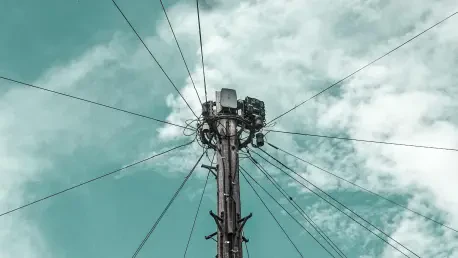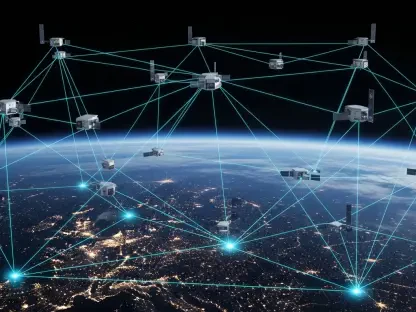I’m thrilled to sit down with Vladislav Zaimov, a seasoned telecommunications specialist with deep expertise in enterprise telecommunications and risk management of vulnerable networks. With years of experience in the field, Vladislav offers a unique perspective on the rapid advancements in mobile network technology. Today, we’re diving into Virgin Media O2’s groundbreaking expansion of their 5G Standalone network across the UK, exploring its impact on users, businesses, and the future of connectivity. We’ll touch on the technological innovations behind this rollout, the strategic decisions driving its reach, and the exciting possibilities it unlocks for industries and everyday life.
Can you walk us through what sets Virgin Media O2’s 5G Standalone network apart from earlier 5G services that leaned on 4G infrastructure?
Absolutely. The key difference with 5G Standalone is that it operates independently of 4G networks, using a fully cloud-based core and advanced radio infrastructure. Unlike the older hybrid setups, this allows for significantly better performance—think faster speeds, lower latency, and improved reliability. It’s a complete overhaul that not only enhances the user experience but also lays the groundwork for cutting-edge applications that couldn’t function on a mixed network. It’s like moving from a patchwork road to a high-speed highway.
How did Virgin Media O2 determine which areas to prioritize for this massive rollout covering 500 towns and cities and over 70% of the UK population?
The strategy likely revolved around a mix of population density, demand for high-speed connectivity, and existing infrastructure. Urban centers and high-traffic areas would naturally be at the top of the list due to the sheer number of users and data needs. But they’ve also pushed for broad coverage, ensuring at least 90% outdoor availability in these locations, which shows a commitment to consistency. Extending to smaller or remote areas is trickier due to terrain and cost, but it’s often guided by strategic importance or government initiatives to bridge digital divides.
Since this 5G Standalone network comes at no extra cost to customers with compatible devices and SIMs, how does this approach reflect Virgin Media O2’s broader mission?
It’s a smart move that aligns with their goal of democratizing access to cutting-edge technology. By removing the price barrier, they’re encouraging adoption and ensuring customers experience the benefits firsthand, which builds loyalty. It also positions them as a leader in a competitive market. As for device compatibility, I’d expect them to roll out programs or partnerships to help users upgrade, especially since the number of Standalone-capable devices has surged recently, driving this expansion.
What are some of the game-changing use cases for 5G Standalone, like autonomous transport or remote healthcare, that we should be excited about?
Oh, the possibilities are incredible! With 5G Standalone’s ultra-low latency and high capacity, autonomous transport can become a reality—vehicles communicating in real-time to avoid accidents or optimize traffic flow. In healthcare, remote surgeries could be performed with precision using robotic systems controlled from miles away. Virgin Media O2 is likely collaborating with tech innovators to test these applications, and while widespread adoption might still be a few years off, pilot projects are already showing promise.
Virgin Media O2 launched 5G Standalone for business customers earlier this year. What kind of response have you seen from the business community so far?
From what I’ve observed in the industry, businesses are thrilled about the potential. The enhanced reliability and speed are game-changers for sectors like logistics, manufacturing, and retail, where real-time data is critical. Feedback likely centers on improved operational efficiency and the ability to innovate—think IoT-driven factories or smart supply chains. I believe industries like healthcare and transportation will see the biggest benefits as they adopt tailored solutions over the next few years.
With a reported daily investment of £2 million into the mobile network, can you shed light on where these funds are likely being allocated?
That level of investment speaks to a comprehensive strategy. A big chunk probably goes toward infrastructure—building new towers, upgrading equipment, and deploying small cells in urban hotspots. Another portion focuses on future-proofing, like securing spectrum or developing cloud-based systems. Customer experience is also key, so investments in reliability and issue resolution at places like airports or railways are critical. Balancing immediate needs with long-term innovation is always a challenge, but it’s clear they’re playing both fields.
What is your forecast for the role of 5G Standalone in shaping the UK’s digital economy over the next decade?
I’m very optimistic. Over the next ten years, 5G Standalone will be the backbone of the UK’s digital economy, driving everything from smart cities to industrial automation. It’ll enable seamless connectivity for millions, boost productivity across sectors, and attract global investment in tech innovation. The ripple effects will be huge—think job creation, better public services, and a more connected society. But it’ll require ongoing collaboration between providers, regulators, and businesses to tackle challenges like coverage gaps and cybersecurity risks. The future is bright, but it’s a team effort.









